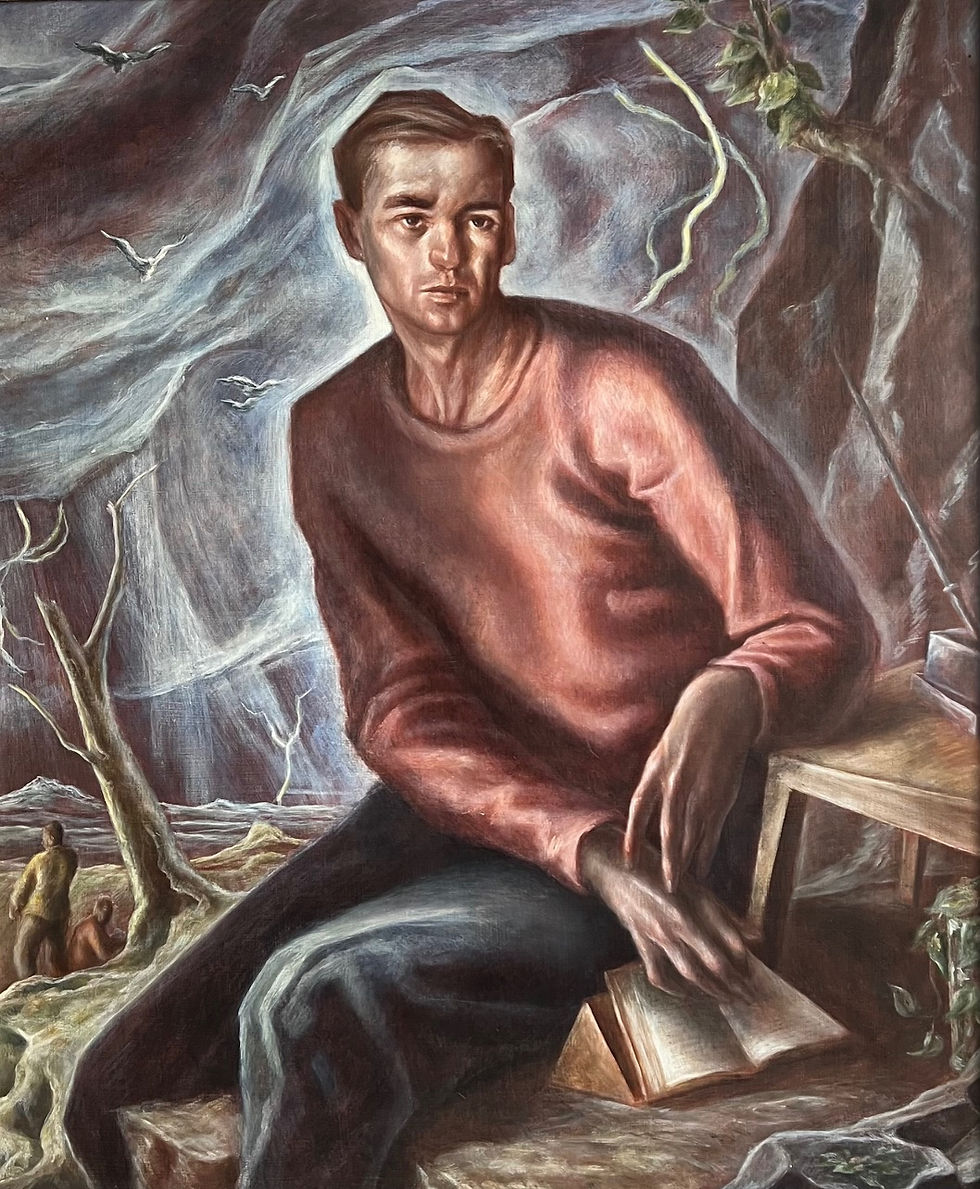William Ashby McCloy (1913 – 2000)
- walthercb1
- Jun 2
- 3 min read
Updated: Jul 15

Self-Portrait, c. 1940, oil and tempera on Masonite, artist’s name inscribed verso, 30 x 25 inches
$28,000
William Ashby McCloy was an American artist, educator, and clinical psychologist. Born in Baltimore, Maryland, McCloy spent much of his childhood in China before returning to the United States at age 13. He pursued an education at the University of Iowa, earning a B.A. in Art in 1933 with highest distinction. He furthered his studies with a year at Yale School of Fine Arts and returned to Iowa to complete an M.A. in Psychology in 1936. His mentors included Eugene Savage at Yale and Mauricio Lasansky, Humbert Albrizio, and Eugene Ludens at Iowa.
McCloy’s early work in the Regionalist style emerged during the 1930s and 1940s, a time when many American artists were seeking to portray the everyday lives of ordinary Americans—especially in rural and small-town settings. Influenced by his mentor John Steuart Curry, as well as fellow Iowan Grant Wood, McCloy’s Regionalist paintings captured a similar spirit: dignified depictions of Midwestern life, often suffused with moral or narrative undercurrents. Like other Regionalists, McCloy focused on realistic human figures, often in action or engaged in community life or work. His compositions told stories of labor, resilience, tradition, and American ideals. Having taught and studied in Iowa and Wisconsin, McCloy was immersed in the cultural and physical landscape of the Midwest.
His Regionalist style featured clear draftsmanship, bold contours, and simplified yet expressive forms, often with a cinematic quality which is evident in Self Portrait. McCloy positions himself against a swirling, elemental backdrop suggestive of the natural forces of his native Midwest but rendered with psychological intensity. His long, sinewy hands and introspective gaze convey both creative tension and emotional restraint. The Regionalist influence is evident in the textured, expressive treatment of the background, evoking a connection to rural life and the American landscape. The turbulent energy which surrounds the artist contrasts with his own stillness, perhaps underscoring an internal struggle as well as the tumult of the Great Depression itself.
By the late 1940s and into the 1950s, McCloy’s art began moving away from Regionalism, influenced by his deeper engagement with psychology which gave rise to a form of Magic Realism and Surrealism. However, the narrative discipline and structural clarity of Regionalism continued to inform his later, more abstract and modern work.
McCloy exhibited extensively during his life in major institutions, including the Art Institute of Chicago, Pennsylvania Academy of Fine Arts, the Metropolitan Museum of Art, Whitney Museum of American Art, Kansas City Art Institute, National Academy of Design, and the Cincinnati Art Museum, among others. His regionalist works garnered prizes from Iowa Art Salon, and he won the most popular painting at the All Iowa Traveling Exhibition in 1937. His works are in the collections of the National Gallery of Art, Library of Congress, Wolfsonian-Florida International Museum, the Slater Memorial Museum (where he was honored with a retrospective) and the Madison Museum of Contemporary Art, as well as other significant institutions.
McCloy's career was multifaceted. He taught at Drake University and the University of Wisconsin, where he assisted American regionalist painter John Steuart Curry on several mural projects from 1939 through 1943. He is often credited with executing the best of Curry’s figural works. In Self-Portrait we see the hallmarks of McCloy's style when he was working with Curry. During World War II, McCloy served as a clinical psychologist in the U.S. Army. After the war, he returned to the University of Iowa, earning an M.F.A. in painting in 1949 and a Ph.D. in Art History in 1958. From 1950 to 1954, McCloy directed the School of Art at the University of Manitoba. He then joined Connecticut College, serving as Chairman of the Art Department until his retirement in 1978. McCloy is listed in Who Was Who in American Art and all other standard references.
.png)



Comments